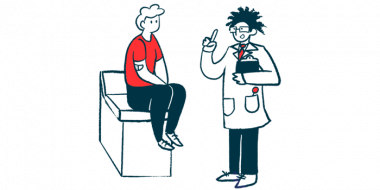Post Surgery Care for SMA Patients Taking Physical Therapy

Michael, my physical therapy patient with SMA, recently decided to have a subcutaneous port voluntarily implanted in his chest. As SMA patients age, and due to their disease, these patients may spend more time in the hospital than most, especially around the flu and pneumonia seasons. Due to having difficulty with blood draws and receiving fluids and medication via an IV, this port will allow for easy blood draws and medications given intravenously when the need arises. The placement of the port is just above his right clavicle. The catheter from this port was threaded into his carotid artery, and the outcome of the surgery was a complete success. While the procedure lasted just over 45 minutes, his surgeon and anesthesiologist decided it would be best to put Michael under general anesthesia instead of a local for the length of the procedure. Once the surgery was completed, Michael spent about 30 minutes in recovery before being transferred back to his room. After the surgeon assured Michael was doing well, he was allowed to go home around 2 PM.
The surgery was on Friday, October 7, and Michael was able to return to therapy the following Tuesday. We didn’t transfer Michael to the therapy table and avoided working on his neck or arms due to the recent procedure. Although Michael didn’t require pain medication after several days, it was still best to allow the neck and shoulder to rest due to the location of the port. I ensured that his incisions were clean and looked like they were healing well. It is important to keep an eye on the incisions and make sure there is no infection arising around the locations.
When a patient with any diagnosis has surgery, it is important to ensure the incisions are healing well and that there isn’t any increased redness or warmth around the incision. It is also important to educate the patient on keeping the incisions clean and what to look for in the case of an infection. Michael has been feeling increased tightness when he leans or turns his head away from the incision, although he feels this is from the stitches and glue from the surgery. This will be monitored closely to ensure comfort when Michael turns to scan the environment for safety.
Once the incisions are healed, we will work on reducing any scar tissue that has built up around the incisions. An increased amount of scar tissue can lead to increased pain and pressure around the sites as well as a reduced range of motion of his neck. This will be done by applying small amounts of lotion to his incisions and then applying pressure in different directions such as across the scars and making circles in either direction to break up any extra scar tissue buildup.
As of now, we will continue with our normal routine with Michael, with the exception of limiting extra strain on Michael’s right shoulder and neck until the incisions are mostly healed. As long as Michael is feeling no pain and the incisions look good, we will not make any significant changes in plans for the next few weeks as far as Michael’s exercises are concerned. Once he is healed, we will focus on increasing range of motion of his neck to further ensure reduced scar tissue buildup.



